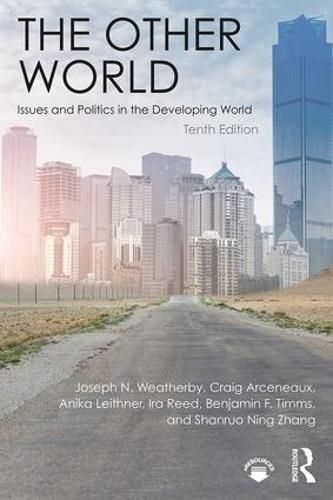Readings Newsletter
Become a Readings Member to make your shopping experience even easier.
Sign in or sign up for free!
You’re not far away from qualifying for FREE standard shipping within Australia
You’ve qualified for FREE standard shipping within Australia
The cart is loading…






The Other World combines a thematic and area studies approach to explore contemporary global issues in the developing world. Accessible and interdisciplinary, this text offers political, economic, social, and historical analysis plus case studies on Latin America, Sub-Saharan Africa, Asia and Eurasia, and the Middle East and North Africa. Highlighting similarities and differences among these regions and focusing on enduring problems, The Other World is a practical look at the issues affecting the majority of the world’s population.
New to the 10th Edition:
Shift of focus from colonialism toward globalization, with continued attention to the legacy of colonialism.
Expanded coverage of Asia.
Re-cast connections between conceptual chapters (politics, economics, and culture) and regional chapters, allowing students and professors to make comparisons and contrasts more readily.
$9.00 standard shipping within Australia
FREE standard shipping within Australia for orders over $100.00
Express & International shipping calculated at checkout
The Other World combines a thematic and area studies approach to explore contemporary global issues in the developing world. Accessible and interdisciplinary, this text offers political, economic, social, and historical analysis plus case studies on Latin America, Sub-Saharan Africa, Asia and Eurasia, and the Middle East and North Africa. Highlighting similarities and differences among these regions and focusing on enduring problems, The Other World is a practical look at the issues affecting the majority of the world’s population.
New to the 10th Edition:
Shift of focus from colonialism toward globalization, with continued attention to the legacy of colonialism.
Expanded coverage of Asia.
Re-cast connections between conceptual chapters (politics, economics, and culture) and regional chapters, allowing students and professors to make comparisons and contrasts more readily.